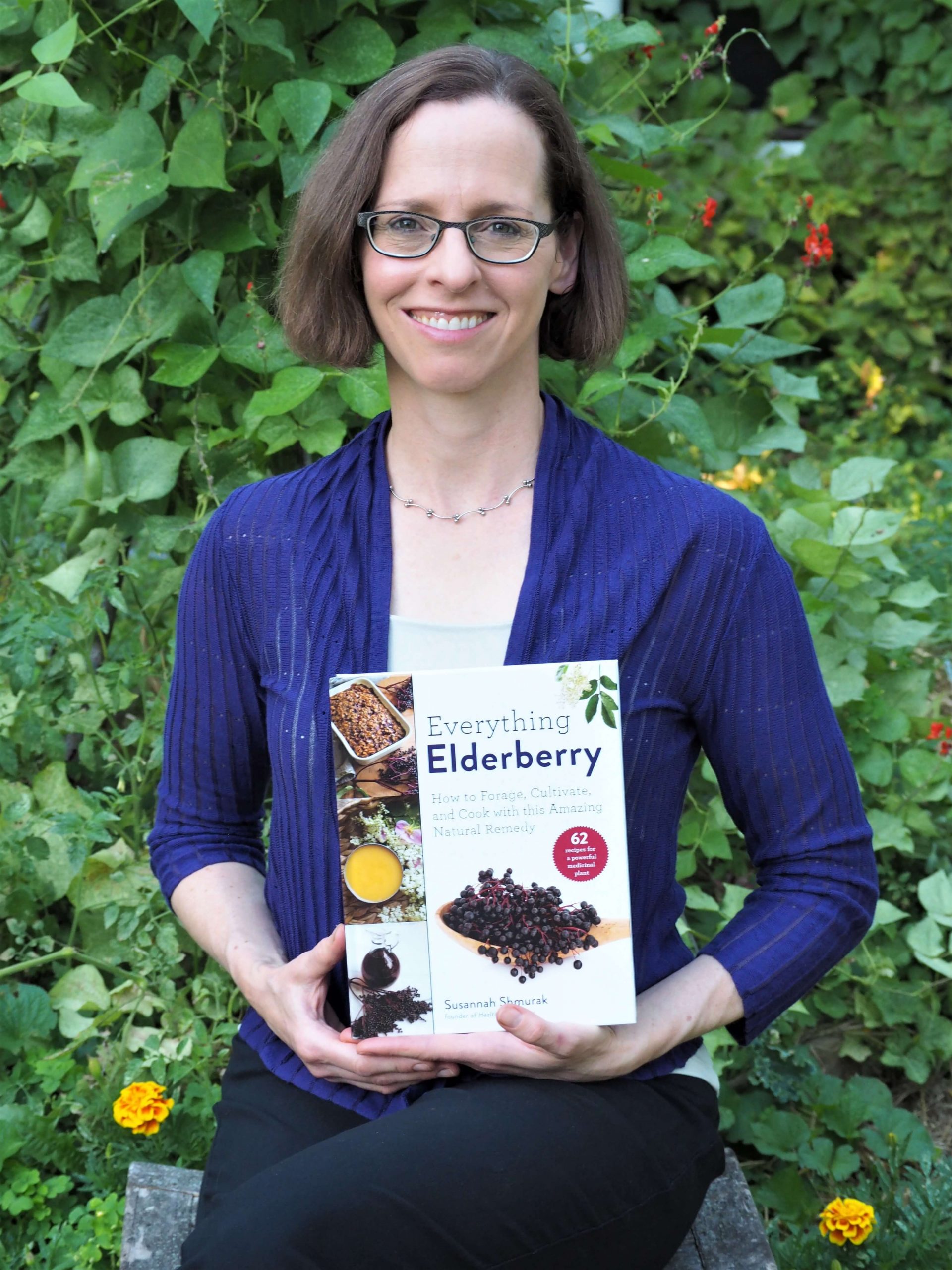Last Updated on March 4, 2024
Natural and homemade cleaners are so much safer for you and your family. Before you grab your cleaning supplies, make sure you’re not spreading toxic chemicals around your house as you scrub and polish.
Did you know many common household cleaners contain chemicals hazardous to human health?
Natural & Homemade Cleaners Help You Avoid Toxic Chemicals
Incredible as it may sound, the government does not require manufacturers to prove the safety of chemicals they use before bringing their products to market, and in fact are allowed to use ingredients known to cause cancer or harm to unborn fetuses which have long since been banned in the EU.
Absurd, but that’s the way the system works, and it’s unfortunately up to us to figure out what’s safe and what’s not.
Meanwhile, evidence continues to mount that more of the 80,000+ industrial chemicals now in use (and in our air, water, as well as our own bodies) can have harmful effects even at low doses.
While we can’t get these chemicals out of our lives completely, the choices we make daily affect our level of exposure, which may in turn affect whether or not we develop immune disorders, metabolic or reproductive problems, or cancer.
Why would you knowingly risk something as important as your health?
Many of us have long assumed that if it’s on a store shelf, it must be safe. But as scientists continue to study these chemicals and share their results with the public, increasing numbers of us have learned that it’s up to us to do the legwork if we want to opt out of at least part of the vast chemistry experiment going on around us.
Related: What’s in Your Beauty Products? How to Reduce Chemical Exposure
Why Conventional Cleaners are Dangerous
One of my favorite environmental nonprofits, the Environmental Working Group (EWG), built on the success of its amazing database of personal care products and created a Guide to Healthy Cleaning covering more than 2000 products and 1000 ingredients.
Thank goodness they did. If you’re not up for making all homemade cleaners, they can point you to some of the least toxic premade options.
Manufacturers aren’t required to list ingredients on household cleaners, making it virtually impossible for the average consumer to find out what on earth s/he is spraying on the countertop. (Though because some “proprietary” information about these products was still not disclosed to EWG, even they couldn’t track down absolutely every ingredient on the products they investigated, which negatively impacts those products’ scores.)
Here’s a snapshot of what they found:
- Some 53 percent of cleaning products assessed by EWG contain ingredients known to harm the lungs. About 22 percent contain chemicals reported to cause asthma to develop in otherwise healthy individuals.
- Formaldehyde, a known human carcinogen, is sometimes used as a preservative or may be released by other preservatives in cleaning products. It may form when terpenes, found in citrus and pine oil cleaners and in some essential oils used as scents, react with ozone in the air.
- The chemical 1,4-dioxane, a suspected human carcinogen, is a common contaminant of widely-used detergent chemicals.
- Chloroform, a suspected human carcinogen, sometimes escapes in fumes released by products containing chlorine bleach.
- Quaternary ammonium compounds (“quats”) like benzalkonium chloride, found in antibacterial spray cleaners and fabric softeners, can cause asthma.
- Sodium borate, also known as borax, and boric acid are added to many products as cleaning agents, enzyme stabilizers or for other functions. They can disrupt the hormone system.
- Many leading “green” brands sell superior products, among them Green Shield Organic and Whole Foods’ Green Mission brand. But not all cleaners marketed as environmentally conscious score high. Some “green” brands such as Earth Friendly Products do not disclose ingredients adequately.
Natural & Homemade Cleaners: Basic principles to keep in mind
1) Avoid fragrance
The strong smell in everything from common laundry detergents to air fresheners often come from worrisome chemicals like phthalates or one of the other 3163 compounds the fragrance industry relies on, many of which score high on EWG’s hazard scale.
If your clothes give off that telltale “laundry” scent, wash them again (and maybe again after that — that stuff can be hard to remove, though this non-toxic chemical remover can help with many common chemicals), in something safer you find in the Guide to Healthy Cleaning.
(This is the non-toxic laundry detergent I started using when I learned about the greenwashing going on with natural detergents.)
You may need to retrain your nose to think “hazardous chemical” rather than “clean.” Nix the dryer sheets and air fresheners also; there are fabulous non toxic alternatives.
Related: How to Build a Healthy Home ~ A Blueprint from an Architect
2) Look for plant-based ingredients without long chemical names, but don’t assume that anything claiming to be “green” actually is without looking it up.
Some of the top “green” brands had products that scored quite poorly, while there were some pretty benign options made by brands that generally had many low-scoring products.
You can buy many of the non-toxic cleaners EWG recommends even in most supermarkets nowadays, without spending much more money. EWG singles out some of the top-scoring products here to help make your choices simpler.
Make Your Own Homemade Cleaners! (Super easy & money-saving!)
You can also save big bucks by making your own homemade cleaning products with simple kitchen staples like vinegar, olive oil, baking soda and lemons. Castile soap can also be used in everything from cleaning mixtures to body wash (and a little goes a very long way). And you won’t be polluting your home’s air or our water supply.
Brittany at The Pistachio Project has a great overview of ingredients here.
Here are a few basic recipes for super simple homemade cleaners to get you started:
All you need for most housecleaning is
- a spray bottle
- a big jug of white vinegar (nice if it’s not petroleum-based)
- some water
- baking soda where you need to scrub.
Other useful ingredients include olive oil, castile soap, essential oils, and lemons. Some recipes can also call for things like hydrogen peroxide, washing soda, or salt, but really vinegar and water cover the majority of cleaning projects.
If you want to add some scent without any added cost you can steep orange peels or lavender leaves in vinegar for a few weeks and strain before using.
If you’ve never tried it, yes, the vinegar smell completely disappears once it’s dried.
All-purpose homemade cleaner:
Combine 1 part vinegar with 4 parts water.
You can add a few drops of your favorite essential oil if you like; many of them also have disinfecting properties, like tea tree or lavender. Peppermint is reported to help repel ants, and studies have shown smelling it can boost energy. Here are lots more uses for peppermint essential oil.
This solution works well as a window or surface cleaner. Undiluted vinegar has also been shown to be an effective disinfectant and helps remove stains. Don’t use on acid-sensitive surfaces, like granite or marble.
Homemade scrub:
Baking soda and water make an effective abrasive paste you can use to scrub sinks, tubs, and pots. It will also loosen baked-on food from pans or the oven–just leave on overnight and then wipe off. Add a little liquid soap if you want additional cleaning power.
Here’s a recipe for natural scouring powder from Brown Thumb Mama.
Homemade bathroom cleaner:
Mix one part hydrogen peroxide with two parts water and spray on bathroom mildew. Leave at least one hour before rinsing.
These are just the tip of the homemade cleaner iceberg. For more recipes for cleaners for all the jobs around your house, check out some of these awesome resources for learning about homemade cleaners:
The Pistachio Project Ways to Clean Green
Eartheasy.com’s Guide to Non-Toxic Home Cleaning
67 All Natural Cleaning Recipes at Keeper of the Home
While you’re greening the air in your home with non-toxic and homemade cleaners, find out how common houseplants can help remove chemicals like formaldehyde that get there from other sources. Find out which are the best plants for cleaning indoor air.
–> Interested in getting chemicals out of other parts of your life? Be sure to read these posts on the most effective ways to cut your chemical exposure:
- How to choose an effective water filter
- Finding the best organic mattresses
- Why to avoid canned food
- Why to get a shower filter
Pin to save these homemade cleaners for later!

Photo credits: jackmac34, rawpixel, Mike Mozart, eek the cat

Susannah is a proud garden geek and energy nerd who loves healthy food and natural remedies. Her work has appeared in Mother Earth Living, Ensia, Northern Gardener, Sierra, and on numerous websites. Her first book, Everything Elderberry, released in September 2020 and has been a #1 new release in holistic medicine, naturopathy, herb gardening, and other categories. Find out more and grab your copy here.




 Hi, I'm Susannah, a garden geek, energy nerd, and fan of healthy food and natural remedies. Need some simple, practical solutions for living healthier and greener? You've come to the right place! More about me and my green projects
Hi, I'm Susannah, a garden geek, energy nerd, and fan of healthy food and natural remedies. Need some simple, practical solutions for living healthier and greener? You've come to the right place! More about me and my green projects